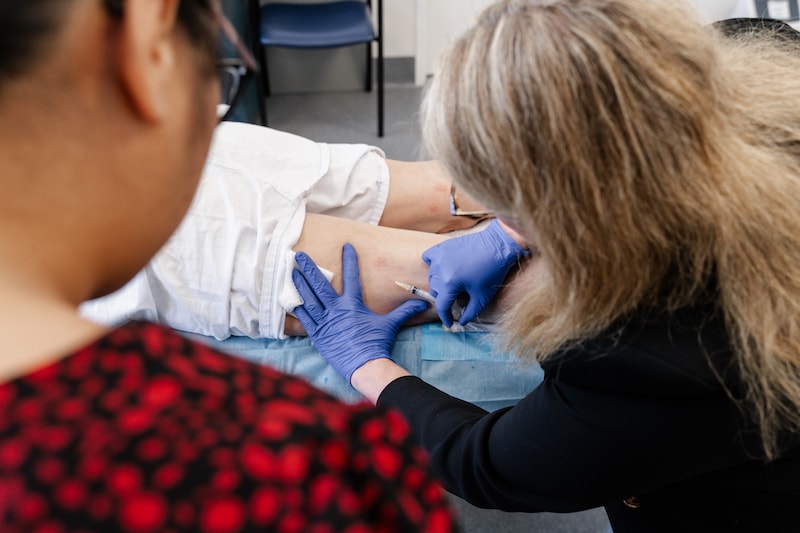Services
Vein
Non-surgical treatment spider veins, varicose veins & venous ulcers
Varicose and spider veins are common in the general community. There are three common types, which are frequently seen in combination. ‘spider veins’ are the finest and are usually fed by larger ‘reticular veins’ which are under the skin. ‘varicose veins’ are the largest, often bulge above the skin surface and are normally due to a weakness in the vein wall. There are many symptoms associated with varicose veins, which include heaviness, burning, aching, stinging, throbbing, restless legs and leg cramps.

How do the non-surgical treatment methods work?
Foamed sclerosants
Medical detergents are able to be made into a foamed solution. Foam is more effective than liquid sclerotherapy but may not suit every patient. This will be discussed in your consultation.
Injection microsclerotherapy
Is a method where the doctor uses an extremely fine needle to inject a solution called a sclerosant directly into unwanted abnormal veins. This creates a change in the vein lining that causes the vein walls to collapse, which then disappears gradually as the body absorbs it.
Ultrasound guided sclerotherapy
For the treatment of larger varicose veins requires the assistance of ultrasound technology to guide precise placement of the injections into the abnormal veins, which are hidden below the skin. The sclerosant again causes a change in the vein lining that leads to the gradual absorption of the veins.
Endovenous laser
Is minimally invasive, it uses a laser fibre put inside the varicose vein. It causes closure of the vein with heat energy. It is usually done in combination with ultrasound guided sclerotherapy.
Post Treatment Care
Most non-surgical leg vein treatments are followed by the application of compression stockings. These should be worn for 1-3 week depending on the treatment provided. All patients are advised to walk regularly after treatment.
In trained hands non-surgical varicose veins treatment has become a brief office procedure providing another option to the hospitalisation required for surgical stripping.
More information
Preparing for Surgery – Local Anaesthetic
Preparing for surgery – Sedation
Post Surgery – Local Anaesthetic
Post Surgery – Sedation